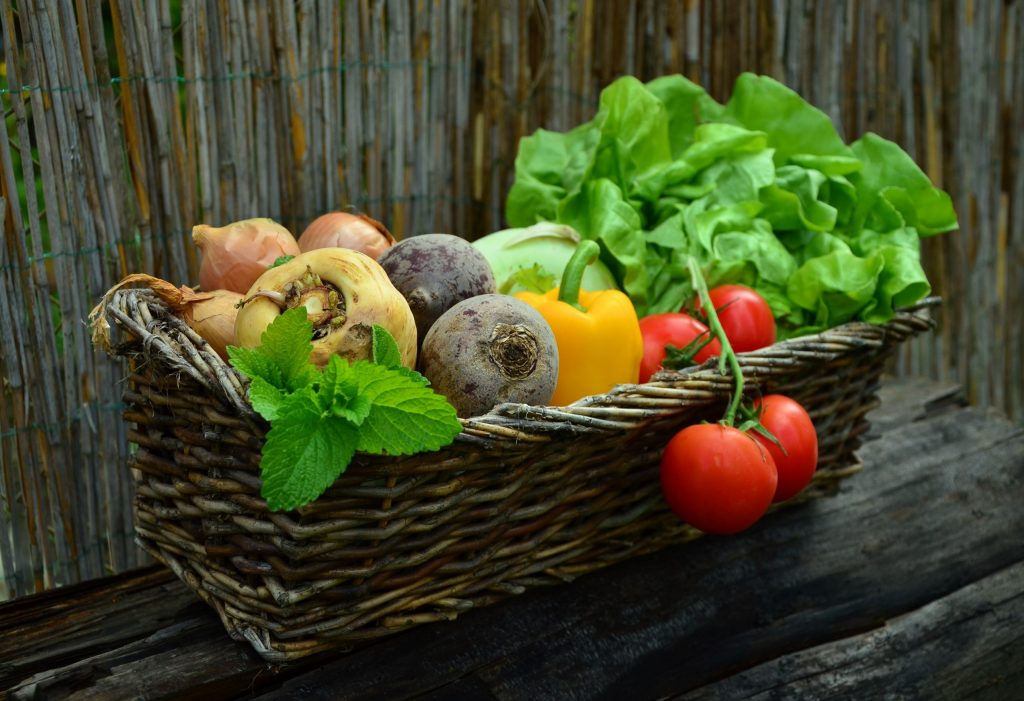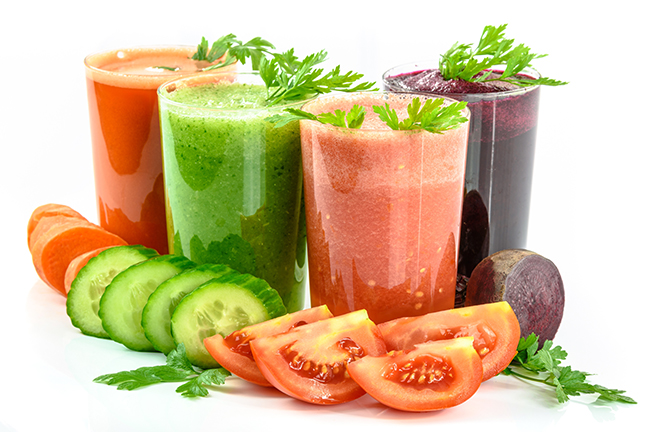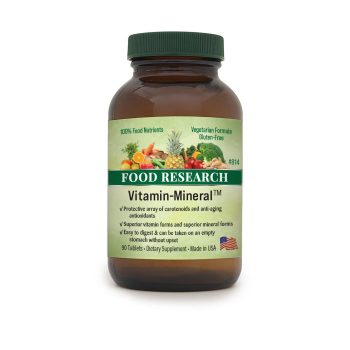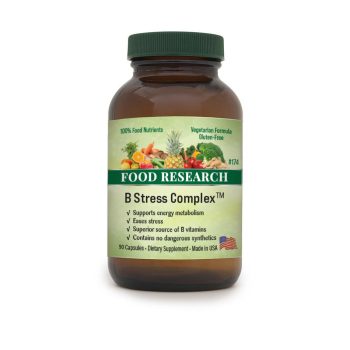
Arginase Bladder™– Nutritional Support for Urine Metabolism and Bladder
Urination is something many people think little about unless something goes wrong. From excessive urination to nocturnal enuresis to urinary
Executive summary: There are major concerns about microplastics and nanoplastics that enter into the human body orally and/or through breathing. Although there is no universally accepted way to detoxify the body of all of them, there are foods such as acerola cherries, fenugreek, ginger, boswellia, turmeric, and others that have been shown to support the reduction of inflammation and may support physiological defenses against oxidative or inflammatory stress associated with microplastic exposure. This is because of their:

Turmeric Boswellia C contains a combination of foods with those properties. While precise mechanisms for removal of plastics in the human body are not fully understood, studies support the view that the combining of these foods is synergistically beneficial for detoxification and human health.
“Nanoplastics (NPs) as contaminants in food and water have drawn increasing public attention … NPs reduce brain function” [1]. Microplastics and nanoplastics are being implicated in neurological degeneration, negative effects of aging, and other matters. Animal studies have shown these plastics can trigger inflammatory responses [1,2].
Avoidance of all such plastics is basically impossible in the 21st century, but people would be wise to reduce exposure.
Beyond that, while there is no accepted ‘treatment’ for all ingested microplastics or nanoplastics, that does not mean that foods and nutrients from foods cannot be helpful in their removal or with any inflammation they may cause.
Consider that many foods and herbs have historically been used to assist with inflammation [1]. The combination of anti-inflammatory foods found in Turmeric- Boswellia C is something to consider.
Understand that plastics are composed of hydrophobic molecules [3]. It has been shown that amphiphilic block copolymers self-assemble into micelles with a hydrophobic core that can solubilize/encapsulate hydrophobic molecules such as those found in plastics [3].
A micelle is a supramolecular structure formed by amphiphilic molecules — compounds with both a hydrophobic (nonpolar) part and a hydrophilic (polar) part. They spontaneously form spherical (or sometimes cylindrical) aggregates in aqueous solution, with the hydrophobic tails inward and the hydrophilic heads outward. Classic examples include detergents, bile salts, phospholipids, and saponins.
While no foods literally contain amphiphilic micelles in the same structured form found in lab surfactant systems, many foods naturally form micelles during digestion, or contain molecules capable of forming micelles once mixed with bile or water–fat interfaces.
Foods such acerola cherries, fenugreek, ginger, boswellia, and turmeric have often been found to work better together than separately. Furthermore, they do contain molecules that can act amphiphilically and may form micelle-like or colloidal aggregates under certain conditions (especially in water or oil-water mixtures). So, while they don’t contain pre-formed micelles in the same sense as soap or bile, extracts from these plants can self-assemble into micelle-like colloids because of their natural amphiphilic compounds. This may account for the finding that some substances contained within them, like saponins which are in all of them (though most abundant in fenugreek), may influence microplastic aggregation, adsorption, and elimination [4].
Saponins are textbook amphiphilic molecules and form micelles that can encapsulate hydrophobic substances [5,6]—microplastics are hydrophobic substances. Although many microplastic particles are too large to be encapsulated in micelles, nanoplastics certainly can be. Other effects from saponins on larger microplastic particles would likely relate to surface adsorption or changes in aggregation, as opposed to true micelle entrapment.
Although many plastics/polymers are electrically neutral, their surface reactivity and leached chemicals can provoke oxidative stress. Thus, their presence in living organisms can result in oxidative damage [7]. Therefore, antioxidant containing foods (like acerola cherries) can help reduce, as well as “clean up,” some of that damage.
Acerola cherries (Malpighia emarginata DC) are one of the richest natural sources of vitamin C and contain phytonutrients like carotenoids phenolics, anthocyanins, and flavonoids [8]. “The vitamin C produced by acerola is better absorbed by the human organism than synthetic ascorbic acid” [9]. The presence of functional phytochemicals in acerola has been shown to influence the intestinal epithelial cells to increase the cellular uptake of vitamin C as opposed to vitamin C alone [10]. “Acerola…contains bioflavonoids” [11], anthocyanins, and quercetin [12]. An animal study found that “acerola juice reduces low-grade inflammation” [13]. Vitamin C “occurs in the body in the form of ascorbate, known for its strong antioxidant and anti-inflammatory properties” [14]. Not only does vitamin C have free radical scavenging abilities, it also has been shown to increase the antioxidant abilities of some other foods [6]. Vitamin C has been shown to “reduce stress markers and inflammation by neutralizing harmful molecules, activating protective pathways, and regulating autophagy, providing potential protection” associated with microplastics [4]. Curcumin, which is a component of turmeric, tends to improve the anti-inflammatory traits of vitamin C [15]. Studies show that vitamin C can reduce toxicities [16]. Acerola cherries contain both vitamin C and bioflavonoids which work synergistically, whereas one study showed that vitamin C “acts synergistically to protect cutaneous tissue cells in culture against oxidative damage” [16].
An in vitro study performed at Doctors’ Research with a digital ORP meter demonstrated that a citrus food vitamin C has negative ORP, but that ascorbic acid had positive ORP [17]. It is negative ORP which better helps clean up oxidative damage [18]. Since ascorbic acid has positive ORP (as well as positive redox potential [19]), it can never replace food vitamin C. Thus, high vitamin C foods, such as acerola cherries, should be considered when plastic ingestion contributes to free radical damage.
Boswellia Gum (Boswellia Serrata), also known as frankincense, has been shown to have anti-inflammatory and anti-oxidant properties [20,21]. An animal study it helpful against the effect of toxicants [22]. Boswellia’s anti-inflammatory and anti-oxidant properties may account for its protection against induced toxins [23]. “The gum exudate obtained from the bark of the tree B. serrata, also called Indian olibanum, has been … widely used in various formulations for the treatment of inflammation” [24]. Boswellia contains triterpenoids. Triterpenoids, although themselves highly hydrophobic, can form colloids in the presence of other amphiphilic compounds (e.g., phospholipids or surfactants in extracts) [25]. “For several thousand years (~4000) Boswellia serrata and Curcuma longa have been used in Aryuvedic medicine for treatment of various illnesses … which are mediated through pathways associated with inflammation … The anti-inflammatory effects of boswellic acids and curcumin have translated to … the improvement … as shown in numerous clinical trials” [26]. Other studies have also pointed to the synergistic benefit of combining boswellia and turmeric together [27]. Another paper concluded that boswellia and fenugreek worked well together [28].
“Fenugreek (Trigonella foenum graecum L.) (FG) is a plant … with … anti-inflammatory, anti-oxidant, … effects … evidence supports a role for fenugreek in protecting against … inflammation” [29]. It is approved by German Commission E for inflammation of the skin [20]. It has also been found to be helpful for dealing with toxins and inflammation of the lungs [30]. Fenugreek gum and Boswellia gum have been found to work synergistically [31]. Fenugreek contains quercetin [32]. Fenugreek also contains saponins [20]. Saponins in fenugreek can influence bile acid metabolism and lipid emulsification, which may aid in the detoxification of nanoplastics [33]. Fenugreek saponins, “After oral administration, with gentle stirring in the gastrointestinal fluids, they form micro- or nanoemulsions” [34]. Thus, that could also be why fenugreek can be helpful in detoxifying from nanoparticles substances like plastics.
Ginger Rhizome Zingiber officinale has anti-inflammatory effects [20]. “Scientific evidence supports the beneficial properties of ginger, including antioxidant and anti-inflammatory capacities” [35]. “Ginger, a well-known natural product, has been demonstrated to possess antioxidant, anti-inflammatory, … properties” and supports “healthy aging” [36]. “Overall, eight RCTs reported the anti-inflammatory effect of ginger supplementation” [37]. On a totally different note, a randomized double-blind study found health benefits when fenugreek, ginger, and turmeric were combined [38]. An animal study found that ginger looked to help protect against toxic changes caused by a type of plastic [39]. Ginger aids with bile metabolism [40]. Since in vitro research suggests that bile salts potentially appear to assist in aggregation of micro and nano plastics [41], this may represent one pathway by which ginger could influence the processing or aggregation of plastic particles, and thus may be a way ginger assists in the removal of plastics in the body.
“Turmeric (Curcuma longa) is a type of herb belonging to ginger family … Turmeric’s effects on health are generally centered upon an orange-yellow colored, lipophilic polyphenol substance called “curcumin,” which is acquired from the rhizomes of the herb. Curcumin is known to have antioxidant, anti-inflammatory, … effects [42]. “Turmeric has antihepatotoxic … and anti-inflammatory effects“ [20]. Curcuma longa (syn. C. domestica Valeton and C. brog Valeton) is also known as “turmeric” worldwide [43]. “In general, curcumin is beneficial to human health, demonstrating pharmacological activities of anti-inflammation and antioxidation” [44]. Curcumin in combination with boswellic acid is more effective “presumably due to synergistic effects of curcumin and boswellic acid” [45]. Turmeric compounds support “healthy aging” as they have helped prevent cellular damage [46] and may offer protective antioxidant activity against microplastic-induced stress [4]. A study including turmeric, ginger root, vitamin C, and boswellia extracts concluded there was efficacy of the blend [47]. Curcumin can form nanosized colloidal aggregates in aqueous media and in the presence of natural emulsifiers [48], hence that may explain turmeric’s aiding in the expulsion of microplastics.
Scientific research has concluded that the combinations of antioxidants such as vitamin C (which is in acerola cherries), quercetin (which is in acerola cherries and fenugreek) and curcumin (which is in turmeric) have been found to “reduce stress markers and inflammation by neutralizing harmful molecules, activating protective pathways, and regulating autophagy, providing potential protection” associated with microplastics [4].
Based on current scientific literature, ingredients such as turmeric, boswellia, fenugreek, ginger, black pepper, and acerola cherries provide synergistic antioxidant and anti-inflammatory support that may help mitigate some biological effects associated with microplastic exposure.
Dr. Mercola has written, “The liver also plays an essential role in clearing microplastics from the bloodstream — Specialized immune cells in the liver, known as Kupffer cells, help trap these foreign particles and route them into bile for elimination via the intestines.” [49]. “The basic functions of the liver can be divided into (1) its vascular functions for storage and filtration of the blood, (2), its metabolic functions concerned with the majority of the metabolic systems of the body, (3) its secretory and excretory functions…About 1100 milliliters of bloods flows from the portal vein and into the liver sinusoids each minute, and about an additional 350 milliliters flows into the sinusoids from the hepatic artery” [50]. The liver thus partially detoxifies the equivalent of all the blood in the body several times per hour. The liver contains Kupffer cells, which are large macrophages that can efficiently cleanse the blood [50]. Liva-DeTox & Support which contains bovine liver tissue provides nutrients traditionally associated with liver support [51]. Liva-DeTox & Support contains milk thistle which is a source of silymarin. Silymarin appears to be helpful as an adjunctive for inflammation and oxidative stress management, which may be relevant to microplastic exposure for potential plastic detoxification [52]. Liva-DeTox & Support also supplies beets and garlic. Garlic has anti-inflammatory uses, whereas beets are said “to have antihepatoxic effects…probably due to the herb’s concentration of betaine” [20].
For additional antioxidant and detoxification support, consider Herbal Antioxidant. Herbal Antioxidant synergistically combines 12 antioxidant containing foods, including acerola cherries, ginger, milk thistle (silymarin source), and turmeric (curcumin source).
Also consider Intestinal Support, which includes bovine intestinal, lymphatic, and pancreatic tissue as well as collinsonia. An in vitro study involving rat derived intestinal epithelial tissue found that those tissues did uptake microplastics [53]. This lends support to the view that ingestion of bovine intestinal tissue may do the same thing, and as it would tend to be excreted, this could result in less microplastics remaining in the human body. Bovine pancreatic tissues naturally contain digestive enzymes. Lymphatic tissue contains macrophages [50]. Macrophages in the lymph nodes act as “clean-up” cells as they engulf and digest foreign particles that enter the lymph through lymphatic vessels. As oral consumption of bovine glands have long been considered by proponents to assist the organ they are related to in the human body [e.g. 54-56], it may be concluded that providing intestinal, lymphatic, and pancreatic tissue may help the excretion processes of intestines in humans. Collinsonia root (also known as stone root) which has long been used as an intestinal tonic and to aid against inflammation [20].
Yes, there is scientific evidence that ingredients in products such as Turmeric-Boswellia C, Liva-DeTox & Support, Herbal Antioxidant, and Intestinal Support should be considered to aid individuals who are concerned about ingested microplastics and nanoplastics.
B Stress Complex™ naturally contains carbohydrates, lipids, proteins (including all ten essential amino acids), and superoxide dismutase as found in specially grown, enzymatically processed Saccharomyces cerevisiae, and organic brown rice.
Unlike many so-called “natural” formulas, B Stress Complex™ formula contains no synthetic USP nutrients or isolated mineral salts, but only contains foods, food complexes, and food concentrates.
Unlike other so-called “whole food” formulas, Vitamin B-6, B-12 & Folate™does not contain USP folic acid as that form is not what is found in natural foods. Vitamins B6, B12, and B9 support healthy blood. B12 is essential for myelin synthesis and central nervous system function.
Unlike most so-called “natural” supplements, Vitamin B-6, B-12 & Folate™ does not contain any folic acid, which is a sythetic from of vitamin B-9 and is dangerous (for more details, please check out the article on Folic Acid Dangers)
References
[1] Yang Q, et al. Oral feeding of nanoplastics affects brain function of mice by inducing macrophage IL-1 signal in the intestine. Cell Reports, Volume 42, Issue 4, 25 April 2023, 112346
[2] Bianchi M, et al. Biological Effects of Micro-/Nano-Plastics in Macrophages. Nanomaterials 2025, 15(5), 394; https://doi.org/10.3390/nano15050394
[3] Wang D, et al. Polymeric Micelles for the Delivery of Poorly Soluble Drugs: from Nanoformulation to Clinical Approval. Adv Drug Deliv Rev. 2020 Sep 24;156:80–118. doi: 10.1016/j.addr.2020.09.009
[4] Wang Z, et al. Antioxidant Intervention Against Microplastic Hazards. Antioxidants 2025, 14(7), 797
[5] Kim AV, et al. Mechanism of the enhancing effect of glycyrrhizin on nifedipine penetration through a lipid membrane. J Mol Liq. 2021 Dec 15:344:117759. doi: 10.1016/j.molliq.2021.117759
[6] Zhang J, et al. Saponin-Based Near-Infrared Nanoparticles with Aggregation-Induced Emission Behavior: Enhancing Cell Compatibility and Permeability. ACS Appl Bio Mater. 2019 Feb 18;2(2):943-951. doi: 10.1021/acsabm.8b00812
[7] Rui J. Exposure to Polypropylene Microplastics via Oral Ingestion Induces Colonic Apoptosis and Intestinal Barrier Damage through Oxidative Stress and Inflammation in Mice. Toxics. 2023 Jan 28;11(2):127. doi: 10.3390/toxics11020127
[8] Prakesh A, Baskaran R. Acerola, an untapped functional superfruit: a review on latest frontiers. J Food Sci Technol. 2018 Sep; 55(9): 3373–3384
[9] Assis SAD, Fernandes FP, Martins ABG, Oliveira OMMDF. Acerola: importance, culture conditions, production and biochemical aspects. Fruits. 2008;63(2):93–101; also published by Cambridge Press
[10] Takino Y, et al. Acerola (Malpighia emarginata DC.) Promotes Ascorbic Acid Uptake into Human Intestinal Caco-2 Cells via Enhancing the Gene Expression of Sodium-Dependent Vitamin C Transporter 1. J Nutr Sci Vitaminol (Tokyo). 2020;66(4):296-299
[11] Hwang J, Hodis HN, Sevanian A. Soy and alfalfa phytoestrogen extracts become potent low-density lipoprotein antioxidants in the presence of acerola cherry extract. J Agric Food Chem. 2001;49(1):308-314
[12] Hanamura T, Mayama C, Aoki H, Hirayama Y, Shimizu M. Antihyperglycemic effect of polyphenols from Acerola (Malpighia emarginata DC.) fruit. Biosci Biotechnol Biochem. 2006 Aug;70(8):1813-20
[13] Dias FM, et al. Acerola (Malpighia emarginata DC.) juice intake protects against alterations to proteins involved in inflammatory and lipolysis pathways in the adipose tissue of obese mice fed a cafeteria diet. Lipids Health Dis. 2014; 13: 24
[14] Gegotek G, Skrzydlewska E.Antioxidative and Anti-Inflammatory Activity of Ascorbic Acid. Antioxidants (Basel). 2022 Oct; 11(10): 1993
[15] Chen L, et al. A Novel Combination of Vitamin C, Curcumin and Glycyrrhizic Acid Potentially Regulates Immune and Inflammatory Response Associated with Coronavirus Infections: A Perspective from System Biology Analysis. Nutrients. 2020 Apr; 12(4): 1193
[16] Hendler SS, Rorvik D. Pdr for Nutritional Supplementd, 2nd edition. Thomson Reuters, 2008
[17] Thiel R. ORP Study on Food Vitamin C for Food Research LLC. Doctors’ Research Inc., Arroyo Grande (CA), February 17, 2006
[18] Fowkes SW. Antioxidants & reduction. Smart Life News, 2000;7(9):6-8
[19] Budvari S, et al editors. The Merck Index: An encyclopedia of Chemicals, Drugs, and Biologicals, 12th ed. Merck Research Laboratories, Whitehouse Station (NJ), 1996
[20] Gruenwald J, Brendler T, Jaenicke C, editors. PDR for Herbal Medicines, 4th ed. Thomson, Montvale (NJ), 2007
[21] Beghelli D, et al. Antioxidant and Ex Vivo Immune System Regulatory Properties of Boswellia serrata Extracts. Oxid Med Cell Longev. 2017; 2017: 7468064
[22] Alyahya A, Asad M. Repeated 28-DAY oral dose study on Boswellia sacra oleo gum resin extract for testicular toxicity in rats. J Ethnopharmacol. 2020 Aug 10:258:112890. doi: 10.1016/j.jep.2020.112890
[23] Rahimi VB, et al. Boswellia serrata inhibits LPS-induced cardiotoxicity in H9c2 cells: Investigating role of anti-inflammatory and antioxidant effects. Toxicon
. 2023 Jun 15:229:107132. doi: 10.1016/j.toxicon.2023.107132
[24] Almeida-da-Silva CL, et al. Effects of Frankincense Compounds on Infection, Inflammation, and Oral Health. Molecules. 2022 Jul; 27(13): 4174
[25] Cometa S, et al. Effectiveness of gellan gum scaffolds loaded with Boswellia serrata extract for in-situ modulation of pro-inflammatory pathways affecting cartilage healing. Int J Biol Macromol. 2024 Oct;277(Pt 1):134079. doi: 10.1016/j.ijbiomac.2024.134079
[26] Septhi V. Potential complementary and/or synergistic effects of curcumin and boswellic acids for management of osteoarthritis. Ther Adv Musculoskelet Dis. 2022; 14
[27] Bannuru RR, et al. Efficacy of Curcumin and Boswellia for Knee Osteoarthritis: Systematic Review and Meta-Analysis. Semin Arthritis Rheum. 2018 Dec; 48(3): 416–429
[28] Chattopadhyay K, et al. Effectiveness and Safety of Ayurvedic Medicines in Type 2 Diabetes Mellitus Management: A Systematic Review and Meta-Analysis. Front Pharmacol. 2022 Jun 8;13:821810
[29] Knott EJ, et al. Fenugreek supplementation during high-fat feeding improves specific markers of metabolic health. Sci Rep. 2017; 7: 12770
[30] Abdrabouh A. Inflammatory and proapoptotic effects of inhaling gasoline fumes on the lung and ameliorative effects of fenugreek seeds. Sci Rep. 2022; 12: 14446
[31] Kumar RV, Sinha VR. A novel synergistic galactomannan-based unit dosage form for sustained release of acarbose. AAPS PharmSciTech . 2012 Mar;13(1):262-75
[32] Drugs and Lactation Database (LactMed®) [Internet]. Bethesda (MD): National Institute of Child Health and Human Development; 2006.2025 Jul 15
[33] Shao Z, et al. Aggregation kinetics of polystyrene nanoplastics in gastric environments: Effects of plastic properties, solution conditions, and gastric constituents. Environment International, Volume 170, December 2022, 107628
[34] Sinka D, et al. Formulation, Characterization and Permeability Studies of Fenugreek (Trigonella foenum-graecum) Containing Self-Emulsifying Drug Delivery System (SEDDS). Molecules. 2022 Apr 29;27(9):2846. doi: 10.3390/molecules27092846
[35] Ballester P, et al. Effect of Ginger on Inflammatory Diseases. Molecules. 2022 Nov; 27(21): 7223
[36] Ozkur M. Ginger for Healthy Ageing: A Systematic Review on Current Evidence of Its Antioxidant, Anti-Inflammatory, and Anticancer Properties.Oxid Med Cell Longev. 2022; 2022: 4748447
[37] Anh NH, et al. Ginger on Human Health: A Comprehensive Systematic Review of 109 Randomized Controlled Trials. Nutrients. 2020 Jan; 12(1): 157
[38] Bumrungpert A, et al. Effects of Fenugreek, Ginger, and Turmeric Supplementation on Human Milk Volume and Nutrient Content in Breastfeeding Mothers: A Randomized Double-Blind Controlled Trial. Breastfeed Med. 2018 Nov 9. doi: 10.1089
[39] Denwer S, et. al. The possible protective effect of ginger extract on toxic changes induced by bisphenol A on the thyroid gland of adult male albino rats: light and electron microscopic study. Ultrastruct Pathol. 2024 Nov;48(6):445-475. doi: 10.1080/01913123.2024.2395849
[40] Yu Y, et al. Dry ginger and Schisandra chinensis modulate intestinal flora and bile acid metabolism to treatment asthma. Front Microbiol. 2025 Mar 27:16:1541335. doi: 10.3389/fmicb.2025.1541335
[41] Shao Z, et al. Aggregation kinetics of polystyrene nanoplastics in gastric environments: Effects of plastic properties, solution conditions, and gastric constituents. Environment International, Volume 170, December 2022, 107628
[42] Kocaadam B, Şanlier N. Curcumin, an active component of turmeric (Curcuma longa), and its effects on health. Crit Rev Food Sci Nutr. 2017 Sep 2;57(13):2889-2895
[43] Dosoky NS, Setzer W. Chemical Composition and Biological Activities of Essential Oils of Curcuma Species. Nutrients. 2018 Sep; 10(9): 1196
[44] Liu S, et al. A Comprehensive Review on the Benefits and Problems of Curcumin with Respect to Human Health. Molecules. 2022 Jul; 27(14): 4400
[45] Haroyan A, et al. Efficacy and safety of curcumin and its combination with boswellic acid in osteoarthritis: a comparative, randomized, double-blind, placebo-controlled study. BMC Complement Altern Med. 2018; 18: 7
[46] Rahman M, et al. Curcuma longa L. Prevents the Loss of β-Tubulin in the Brain and Maintains Healthy Aging in Drosophila melanogaster. Mol Neurobiol. 2022; 59(3): 1819–1835
[47] Bharat TB, et al. Ingredients of a Natural Oral Nutritional Supplement and Their Role in the Treatment of Osteoarthritis. Clin Med Insights Arthritis Musculoskelet Disord. 2022 Mar 25;15:11795441211063365
[48] Moutas S, et al. Curcumin-decorated nanoliposomes with very high affinity for amyloid-β1-42 peptide. Biomaterials. 2011 Feb;32(6):1635-45. doi: 10.1016/j.biomaterials.2010.10.027
[49] Mercola J. Study Finds Widespread Microplastics in Reproductive Fluids, What It Means for Fertility. Mercola.com, September 29, 2025
[50] Guyton AC, Hall JE. Textbook of Medical Physiology, 9th ed. WB Saunders, Phil., 1996
[51] Profiles in Nutritional Progress. Rubicon Productions, Bakersfield, 1993
[52] Elsheikh A, et al. Polystyrene microplastic particles induced hepatotoxic injury via pyroptosis, oxidative stress, and fibrotic changes in adult male albino rats; the therapeutic role of silymarin. Toxicol Mech Methods. 2023 Nov;33(6):512-528. doi: 10.1080/15376516.2023.2191270
[53] Sofield CE, et al. Digestion of microplastics with simulated gastrointestinal conditions mitigates uptake by intestinal epithelial cells: Quantified by imaging flow cytometry. Journal of Hazardous Materials Volume 498, 15 October 2025, 139816
[54] Burns D. Accumulating scientific evidence supports glandular therapy. The Digest of Chiropractic Economics, Nov/Dec 1987: 74-79
[55] Schwartz EF. Glandular therapy. The American Chiropractor, January/February 1983:14-18
[56] Profiles in Nutritional Progress. Rubicon Productions, Bakersfield, 1993
This document is intended solely for the use of health care professionals. It has not been evaluated by the US FDA or any other governmental authority. Scientists can, and do, often come to differing conclusions when looking at data and reports.
Food Research products are distributed exclusively
in the USA by Doctors’ Research, Inc.

Urination is something many people think little about unless something goes wrong. From excessive urination to nocturnal enuresis to urinary

Although many people take isolated nutrients as antioxidant supplements, they may not be getting the benefits they hope for. While isolated nutrients have powerful antioxidant abilities in vitro, they rarely have significant antioxidant benefits in vivo.

Vitamin-Mineral™ (90 Tablets) is a 100% vegetarian FOOD supplement that is the best multi-vitamin, multi-mineral product available anywhere. Unlike some other claimed “ WHOLE FOOD” multi-formulas, it does not contain ANY isolate USP nutrients. 270 Tablets – $89.98

B Stress Complex™ (90 Capsules) is a 100% vegetarian FOOD supplement that is intended to supply 100% FOOD B vitamins. Unlike certain so called “whole food” B vitamin sources, it does not contain isolated USP niacinamide, pyridoxine hydrochloride, or any isolated “nutrients”.

Gluco-Sugar-Balance™ (90 Capsules) is a 100% vegetarian FOOD supplement intended to help support a healthy balance of glucose in the body. It contains minerals, such as Chromium GTF and vanadium, as well as herbs to nutritionally support the body’s blood sugar systems.

Metabolic Thyro™ (90 Tablets) is a 100% FOOD supplement that is intended to supply nutrients, glandulars, and herbs needed to maintain and support optimal thyroid health. It is made up of naturally-iodine containing kelp, plant source l-tyrosine, and bovine glandulars.